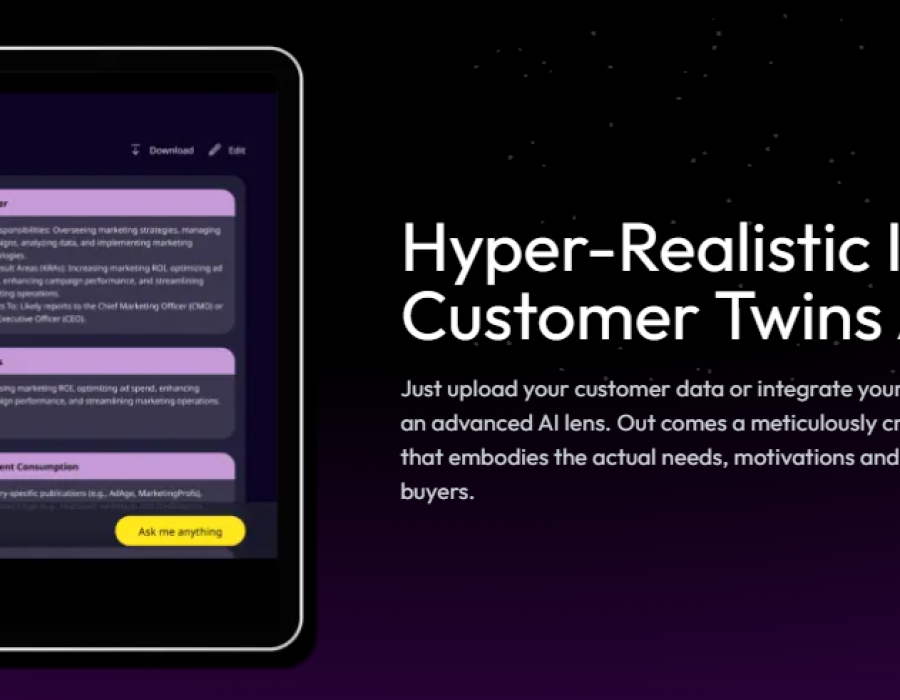Digital Twins of Customers and AI Personas: Transforming Customer Engagement
In today’s digital economy, Digital Twins of Customers (DTOC) and AI Personas are revolutionizing how businesses understand and interact with their audiences. A customer digital twin is a dynamic, virtual representation of a customer that captures behavior, preferences, and interactions across multiple channels. Meanwhile, an AI persona is a virtual identity or avatar that simulates a human personality to engage with users, provide support, and create personalized experiences. Together, these innovations are driving hyper‑personalized marketing, predictive analytics, and next‑level customer experiences.
What is a Digital Twin of a Customer?
A digital twin of a customer is essentially a virtual customer replica. This behavioral digital twin is powered by data from CRM systems, IoT devices, online activities, and past purchases. By using machine learning algorithms, organizations can simulate how a customer might respond to a new product, promotional offer, or pricing strategy.
Key keywords in this space include:
- Customer digital twin
- Digital persona twin (DPT)
- Synthetic customer model
- Behavioral digital twin
- AI persona twin
These digital replicas allow businesses to create predictive models for customer behavior and churn prevention, helping optimize engagement strategies in real time.
AI Personas and Their Role
AI personas are digital human avatars or synthetic personas designed to interact with customers across websites, chatbots, and virtual assistants. They simulate tone, empathy, and brand personality to improve customer trust and loyalty. AI personas can be used for:
- 24/7 automated support through virtual assistants
- Personalized marketing conversations
- Training and coaching applications for internal teams
- Virtual event guides or interactive brand mascots
By integrating emotion‑aware AI personas, companies can provide affective interactions, reading customer sentiment and adjusting responses for better engagement.
Data, Technology, and Process
Both digital twins of customers and AI personas rely on robust data ecosystems. Data from social media, CRM platforms, e‑commerce platforms, IoT sensors, and browsing patterns is collected and processed. Machine learning, retrieval‑augmented generation (RAG), and affective computing are often used to analyze and respond to real‑time inputs.
The typical pipeline involves:
- Data aggregation and anonymization
- Behavioral analysis and segmentation
- Persona generation and twin modeling
- Continuous real‑time updates
- Integration with marketing and support systems
Business Applications and Benefits
Businesses are leveraging digital twins of customers and AI personas for:
- Hyper‑personalized marketing – Delivering product recommendations and content tailored to customer preferences.
- Predictive engagement – Anticipating customer needs before they arise.
- Churn prevention – Identifying early warning signs of disengagement.
- Operational efficiency – Reducing the cost of market research and customer support.
- E‑commerce optimization – Using virtual try‑on avatars and digital human assistants to reduce product returns.
In retail, for instance, customer digital twins help visualize in‑store behavior and simulate new store layouts. In banking and financial services, AI personas act as digital relationship managers. For training and corporate learning, virtual mentors built from persona twins simulate realistic customer scenarios for staff training.
Ethical and Privacy Considerations
While the technology offers enormous opportunities, privacy and ethics are critical. Businesses must manage:
- Consent and transparency in creating digital twins
- Data protection and anonymization for GDPR or local compliance
- Bias reduction in AI persona models to prevent unfair profiling
- Ownership of digital likeness and personas to avoid misuse
Organizations that prioritize ethical digital twin governance are more likely to build trust with customers.
Market Trends and Future Outlook
The market for digital twins and AI personas is rapidly growing. Businesses are expected to scale virtual populations to simulate thousands of customer behaviors, replacing traditional focus groups. Affective digital twins capable of expressing and sensing emotions will enhance emotional engagement. Hybrid human‑AI support models will also become common, where human agents collaborate with AI personas for seamless interactions.
Future applications include:
- Metaverse and virtual retail twins
- Smart city tourism guides using digital human personas
- Enterprise employee twins for productivity and wellness tracking
Summary
Digital Twins of Customers and AI Personas are redefining customer experience and marketing strategy. By combining predictive analytics, machine learning, and emotion‑aware AI, businesses can deliver hyper‑personalized services, improve customer loyalty, and optimize operational efficiency. At the same time, success depends on privacy, consent, and ethical governance to ensure customer trust.
As organizations embrace these technologies, the fusion of customer digital twins and AI personas promises to create a future of data‑driven, intelligent, and human‑centric engagement.






Comments